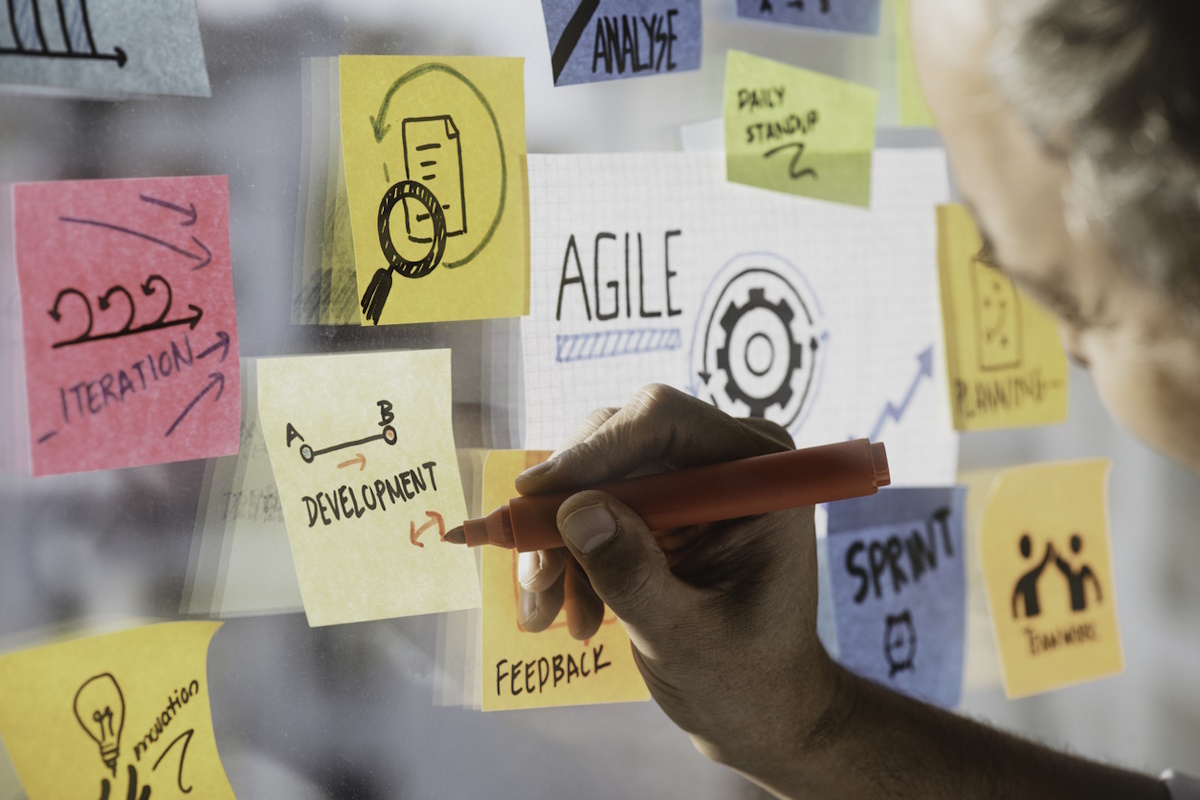Unlocking Agile’s potential

Jon Kern, Consultant at Adaptavist and co-author of "The Agile Manifesto for software development and Java design", argues that unlocking Agile’s full potential starts with the right mindset
In the ever-evolving world of business, traditional approaches with rigid structures and top-down management have proven inadequate, stifling innovation and often leaving employees lacking motivation. Companies can become so focused on process for process’ sake, excessive planning and documentation, and even tools, such that they lose sight of their main purpose - meeting their customers’ needs by delivering valuable outcomes.
The solution is Agile - a transformative way of working initially developed in the software development industry. Rather than sticking to standardised processes and tackling a long project in one go, Agile strives to encourage a more holistic and effective approach to more quickly provide feedback.
An Agile approach provides businesses the advantage of adapting to changing circumstances with more flexibility and enabling them to make the most of their people and resources. This encourages constant improvement, collaboration and allows employees and customers to give frequent feedback as the project progresses.
Yet, despite the evolution of Agile from the tech world into manufacturing, marketing, and beyond, lots of businesses still struggle to unlock Agile’s full potential. The root issue? Failure to wholly embrace an “Agile mindset”, based on four simple values and twelve underlying principles laid out in the original Agile Manifesto from 2001. In the 23 years since the document’s publication, the tools, practices, and terminology around agility have changed significantly. However, the core challenges remain the same.
The Agile manifesto boldly asserts that leaders should put “Individuals and interactions over processes and tools.” However, many organisations find themselves too focused on the processes, tools and technologies involved in Agile, instead of adhering to the agile values and underlying principles. They “do Agile”, rather than “be Agile” and wonder why they don’t get the sort of gains that Agile companies experience.
Rather than abandon Agile out of frustration, leaders can make the shift towards an Agile mindset and, in turn, transform the business function and culture. By putting people before practices, Agile methods will elevate businesses and as a result, staff will reap the personal benefits, and customers will be delighted as they receive more frequent and impactful value deliveries.
What makes up an Agile mindset?
The right mindset is crucial for Agile success, yet a true definition of an “Agile mindset” is hard to pin down. However, there are a handful of underlying values that are essential to embrace as part of an Agile approach.
Embracing adaptability and flexibility within a physically and mentally “safe” environment is crucial in fostering an Agile culture. Agility’s main focus is continuous learning and frequent re-evaluation, so it’s important to get a feel for what is out there to anticipate what’s coming. This also means embracing the ability to pivot in a new direction based on everything you’ve learned.
Then, communication and building a shared environment of mutual trust is essential. Everyone within the business should be clear on the goals they are striving for with aligned visions and frequent check-ins. This is essential to managing the various stakeholders within the business.
Leadership rightly needs oversight on project deadlines, costs, and rationales - but team members also require the freedom to push back on unrealistic demands and question assumptions. As per the Agile Manifesto, it’s all about instilling an interaction-first approach.
Finally, when you’re exploring the unknown, there’s risk involved, so Agile organisations need adventurous people at all levels who are prepared to take risks and challenge the status quo. Leaders should foster a culture where it’s safe to fail, where people can bring their ideas and celebrate experimentation.
Transformation doesn’t happen overnight, so it’s vital you celebrate the small wins, rewarding teams when they learn from failure, encouraging employees to be brave, reflecting on what’s not working, and adapting accordingly.
The Agile implementation process
The specifics for any Agile adoption vary wildly depending on context, for example: company size, industry, and budget. This is why developing an Agile mindset is a logical first step to guide Agile transformations. However, when it comes to practical ways to implement Agile, there are several frameworks and steps to ensure your business is ready for Agile.
Recognise your starting point and goal. Knowing where you are in your Agile journey is an essential starting point. If you don’t know what problems you’re trying to solve, it is difficult to know what your next steps should be or recognise if things are improving.
Understand if you’re ready for the shift. Top executives must understand the value of an Agile mindset and methodologies and be willing to invest resources to make the culture shift happen. Technology should be able to grow with your evolving people and processes over time, not just replace them.
It is critical to treat process and tool ideas as hypotheses, and test how things work by prototyping and simulating and testing. That way, you can incorporate feedback quickly and iterate to a solution that works.
Identify your main technology requirements. Once your procedures are defined, investigate which tools will optimally support your people and processes. Consult stakeholders and get input from those people that will be directly using or benefitting from the technology.
Choose the right technology for you. When reviewing potential tools, ensure they address the stakeholders’ needs. They must support you best where you are today and continue to support you as you work towards your goals.
Start with small teams, then scale when appropriate. Big bang rollouts can work, but require coordination and time. Phased-in implementation allows adjustments based on constant feedback.
Set goals and measure progress as you go. Regularly check in to ensure the milestones are being met.
It all starts with mindset
Ultimately, specific frameworks serve merely as guidelines. Developing an Agile-aligned culture around feedback, trust and purposeful work, allows Agile to fully elevate business performance. This is why, more than processes or tools, embracing the values and feedback-driven mindset founded in the original 2001 Agile Manifesto is key.
The latest tools and terminologies come and go, but putting principles first and seeing employees as more than interchangeable resources unlocks Agile’s lasting impact. The specifics of adoption vary wildly, but this growth-oriented mindset forms an essential touchstone for successfully guiding any Agile transformation.
Jon Kern is a Consultant at Adaptavist and co-author of The Agile Manifesto for Software Development and Java Design
Main image courtesy of iStockPhoto.com

Business Reporter Team
You may also like
Most Viewed
Winston House, 3rd Floor, Units 306-309, 2-4 Dollis Park, London, N3 1HF
23-29 Hendon Lane, London, N3 1RT
020 8349 4363
© 2024, Lyonsdown Limited. Business Reporter® is a registered trademark of Lyonsdown Ltd. VAT registration number: 830519543





